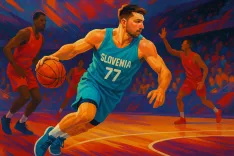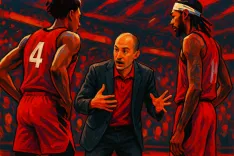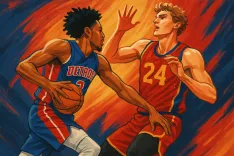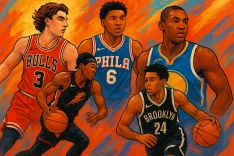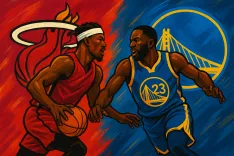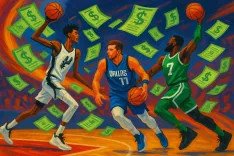Upcoming Financial Decisions for NBA Teams Ahead of 2025-26 Season
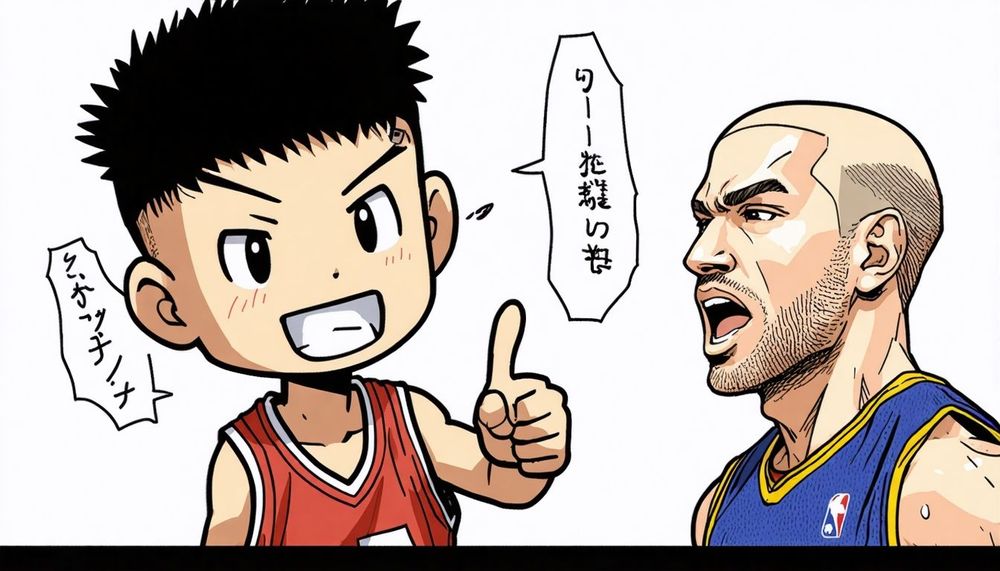
In the NBA, every decision comes with inherent risks, and teams typically construct their rosters during the summer through the draft, free agency, and trades. Significant changes can happen during the season, as demonstrated by blockbuster trades like Luka Dončić's, yet the majority of roster shaping occurs in the offseason. Given the complexities of salary caps, luxury taxes, and financial constraints, teams must navigate various challenges to assemble competitive lineups that balance short- and long-term goals. This analysis highlights the toughest financial choices each team will face ahead of the 2025-26 regular season, particularly with new national TV deals set to increase the salary cap to an estimated $154.6 million in July 2025, marking the maximum allowable yearly increase of 10%.
The NBA operates under a soft salary cap system, where most teams tend to exceed the cap by the season's end. Some teams will intentionally remain below the luxury-tax threshold of $187.9 million, as being below this tax level allows for distribution of a penalty among higher-spending teams. Others may choose to limit their spending before reaching the first apron (set at $195.9 million) or the second apron ($207.8 million), as crossing these thresholds brings additional restrictions. Typically, only top contenders and teams like the Phoenix Suns aim to cross the second apron. Meanwhile, teams under the cap enjoy greater flexibility in trades and signings and can utilize mid-level exceptions for roster enhancements. However, teams surpassing the first apron and still under the second face stricter limitations, particularly regarding mid-level exceptions and signing new players.
As the offseason approaches, several teams must confront significant roster decisions. For Atlanta, the focus will be on Trae Young's future and the potential re-signing of free agents Clint Capela and Caris LeVert, while also considering the impact of a healthy Jalen Johnson. Following the departure of general manager Landry Fields, the Hawks will seek a new executive capable of navigating this tricky financial landscape and securing a long-term commitment for up-and-coming player Dyson Daniels, who emerged as a potential cornerstone after winning the Most Improved Player award.
The Boston Celtics face a critical juncture as they grapple with Jayson Tatum's Achilles injury and a substantial payroll headed for a staggering $510 million figure—prompting the need for cost-control measures. Assessments on free agents like Al Horford and Luke Kornet will play a vital role in shaping Boston's strategy moving forward.
The Brooklyn Nets are positioned with the most cap space of all teams and have the flexibility to pursue high-profile targets or potentially trade away established players like Cam Johnson and Nicolas Claxton. With young talents like Cam Thomas, Day'Ron Sharpe, and Ziaire Williams under varying contractual scenarios, Brooklyn's offseason maneuvers will be closely watched by the entire league.
The Charlotte Hornets, having struggled last season, will evaluate their core group while considering extension plans for center Mark Williams, who faced his own set of durability concerns. The team's direction will hinge on the health of its young stars, particularly the highly-drafted Brandon Miller and LaMelo Ball.
In Chicago, the promising backcourt of Coby White and Josh Giddey is proving to be effective, yet Giddey's impending restricted free agency presents a challenge. The Bulls will need to determine how much they're willing to spend to retain his services, given that he may command a salary exceeding $30 million.
The Cleveland Cavaliers made bold moves last season, yet their high payroll necessitates evaluating potential contracts for key players like Ty Jerome in the face of postseason disappointments. Meanwhile, the Dallas Mavericks must prepare for life without Kyrie Irving as he recovers from an ACL injury; the team may navigate a new deal that allows for complex financial arrangements while addressing their playmaking void.
The Golden State Warriors are gearing up for a more extended phase centered around Steph Curry, Jimmy Butler, and Draymond Green, while examining the future of younger players like Jonathan Kuminga amid financial implications. Similarly, the Houston Rockets achieved early playoff success but must decide whether to maintain their current roster or seek star power through trades, eyeing potential targets in the offseason. The Indiana Pacers face the possibility of entering luxury tax territory by re-signing Myles Turner, thus potentially altering their long-standing strategy.
Among other teams, the Los Angeles Clippers are weighing their continued commitment to star players given their injury histories, while the Memphis Grizzlies favorably view securing Jaren Jackson Jr. in the coming months. The Miami Heat need to explore roster changes following a difficult season, while the Milwaukee Bucks must address Giannis Antetokounmpo's future, particularly in light of injuries affecting their championship quest. Teams facing a looming draft and renewal period, like the Minnesota Timberwolves, New Orleans Pelicans, and others, must decide wisely about their future directions and available options this offseason.
Going into the draft, teams will need to balance pressing financial obligations with the goal of acquiring fresh talent that can lead them to success. Each roster's situation is unique and shaped significantly by forthcoming decisions that could impact their standings for years. With teams ever cognizant of salary caps and their strategic implications, upcoming months promise critical choices that will define each franchise's trajectory.
